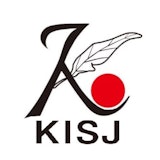この記事もチェック
-
 動画記事 10:06
動画記事 10:06おばあちゃんが作る伝統的な日本のおせち料理。そこには人生の教訓が詰まっていた!? まさみおばあちゃんのおせち料理を通して人生の本質が学べる動画
グルメ伝統文化- 144 回再生
- YouTube
-
 動画記事 6:30
動画記事 6:30東京港区にある豆腐専門店の「東京 芝とうふ屋うかい」。美味しい料理に舌鼓を打ち、都会のど真ん中で美しい日本庭園を堪能!
グルメ- 69 回再生
- YouTube
-
 動画記事 4:17
動画記事 4:17空前の日本食ブームで、食品の輸出量や輸出額が大幅増加する可能性も!インバウンドの帰国後需要を見越した日本食輸出の販路拡大ってどういう取り組み?
ニュース祭り・イベント- 89 回再生
- YouTube

![[画像1][English/日本語]In this issue, I would like to introduce you to some of the things that you should not](https://img-cooljapan.imgix.net/member_posts/image/ee2505b5bc7b038b6e2ce1da459047f31723c23e.jpg?w=480&h=480&fit=min&auto=format&q=70)
![[画像2][English/日本語]In this issue, I would like to introduce you to some of the things that you should not](https://img-cooljapan.imgix.net/member_posts/image/b1bb43f8c5c8d6e2daaef1f4d1f0541c09de8902.jpg?w=240&h=240&fit=min&auto=format&q=70)

